Joy in the Northwest, as Tibetan Buddhist Nuns In India and Nepal Earn Highest Geshema Degree
Written by: Heather Wardle
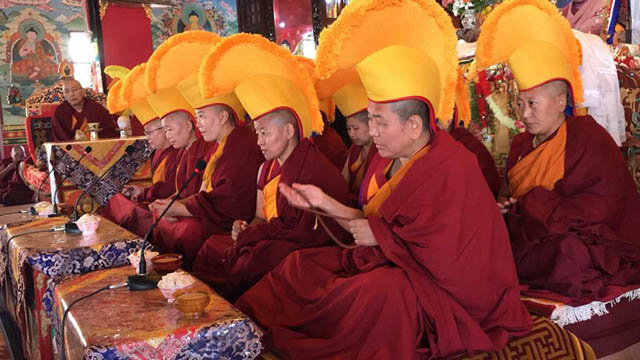
Ten geshemas wearing yellow hats take part in damcha, a formal debate process during which the graduating geshema nuns debate with the other nuns.
Photos by: Tizi Sonam
In November there was rejoicing in the Tibetan Nuns Project’s Seattle office, with the news from India that 10 more Tibetan Buddhist nuns had made history by attaining their geshema degrees. The 10 nuns received their degrees at a Nov. 5 ceremony at Kopan Nunnery in Nepal.
Headquartered in India, with the North America office in Seattle, the Tibetan Nuns Project is a 501(c)3 charity established in 1987 to provide education and humanitarian aid to Tibetan Buddhist nuns living in India.
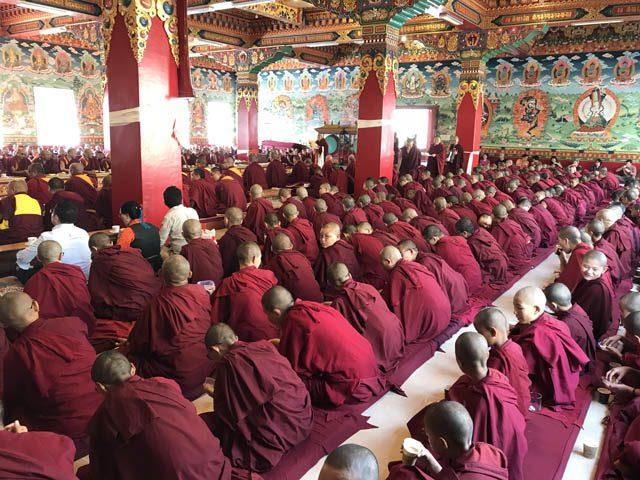
The geshema degree (called a geshe degree when awarded to monks) is the highest level of training in the Gelugpa school of Tibetan Buddhism. It is roughly comparable to a doctorate in Tibetan Buddhist philosophy.
This year’s graduation of 10 more Geshemas brings the total number of Himalayan-born nuns with this degree to 36. Tibetan Nuns Project has offered educational and financial support to 13 of these nuns.
In addition, the Tibetan Nuns Project has more broadly supported the geshema exam process. This has included covering food and travel costs for all the nuns during the exams and, since 1997, supporting the Jang Gonchoe inter-nunnery debates, a critical part of the nuns’ exam preparations.
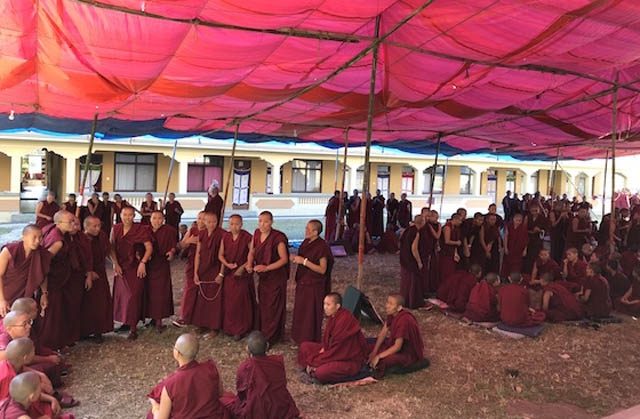
The opportunity for Tibetan Buddhist nuns to receive this level of education was only won in 2012. Before then Tibetan nuns were not allowed to take the final exams for the degree.
The nuns’ success fulfills a longstanding wish of His Holiness the Dalai Lama and is a major accomplishment for Tibetan women. Earning the geshema degrees also marks a turning point for the nuns. By obtaining their geshema degrees, the nuns move one step closer to standing as equals with monks. The geshemas possess a treasure of knowledge and will now be eligible to assume various leadership roles, previously reserved for men, in the monastic and lay communities.
“Providing education is the greatest gift,” said Lisa Farmer, executive director of Tibetan Nuns Project. “I believe that providing opportunities for education has the furthest-reaching impact. By educating people, we elevate them and those around them.”
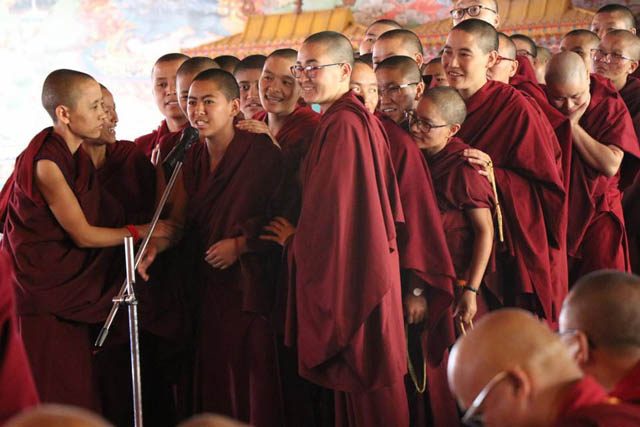
Geshes and geshemas are the most educated monastics in Gelugpa tradition, carrying much of the responsibility for preserving Tibet’s precious religious wisdom and culture.
This is the third year in a row in which a group of nuns completed the challenging four-year exam process. In 2016, Tibetan Buddhist nuns made history when 20 nuns received their degrees from His Holiness the Dalai Lama at a special ceremony at Drepung Monastery in South India. Last year another six nuns graduated at a ceremony at Dolma Ling Nunnery and Institute. In 2011 German nun Kelsang Wangmo became the first woman to receive the geshema title.
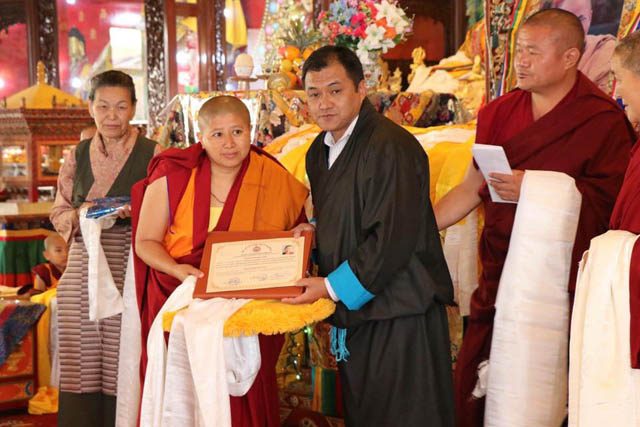
The Geshema examination process is an extremely rigorous one that takes four years in total. Each year, during the almost two-week-long exam period, the nuns must take both oral (debate) and written exams. They are examined on the entirety of their 17-year course of study of what’s called the “five great canonical texts.”
As soon as the Seattle staff of Tibetan Nuns Project learned the good news about the geshema exam results, their first action was to contact the sponsors of nuns who had taken exams in August. Staff also contacted the hundreds of people around the world who sent good luck messages prior to the exams.
The Tibetan Nuns Project’s sponsorship program is the heart of its work. Supporters are able to sponsor a nun for just $1 a day, helping provide her with education, food, shelter, clothing, and health care.
“It was gratifying to write to thank the sponsors of nuns on their path to the Geshema degree,” said Farmer, “and to share with them the impact of their generous support.”
The nuns’ success comes at a time when Tibetan Buddhism inside Tibet in increasingly under threat. Chinese Communist policies have attempted to destroy traditional Tibetan culture, particularly its unique religious heritage and rich tradition of spiritual practice and scholarship. The Chinese government and supporters of the Cultural Revolution destroyed more than 6,000 monasteries and nunneries between 1959 and 1980.
Hundreds of Tibetan nuns living in India risked their lives to escape from Tibet, seeking the freedom to practice and study Buddhism. The geshema degree is a respected step on their path, but their dream is nothing short of full enlightenment, to end the suffering of all sentient beings.
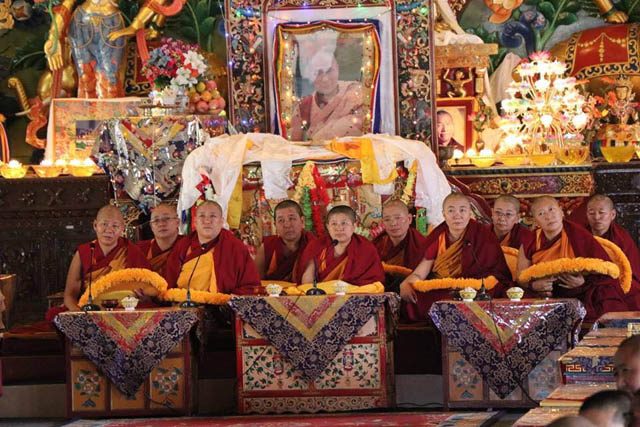
In many cases nuns pursuing the geshema degree had received no schooling in Tibet, and some were illiterate on arrival, unable even to write their own names. They had had no education in their own language, nor had they been allowed education in their religious heritage while in Tibet.
“To reach this historic milestone, the Tibetan Nuns Project had to build an educational system from the ground up,” Farmer said. “Now these women pioneers are inspiring other nuns to follow in their footsteps.”
The Tibetan Nuns Project has helped to re-establish nunneries in India. It currently supports seven nunneries and more than 700 Tibetan Buddhist nuns from all schools of Tibetan Buddhism.
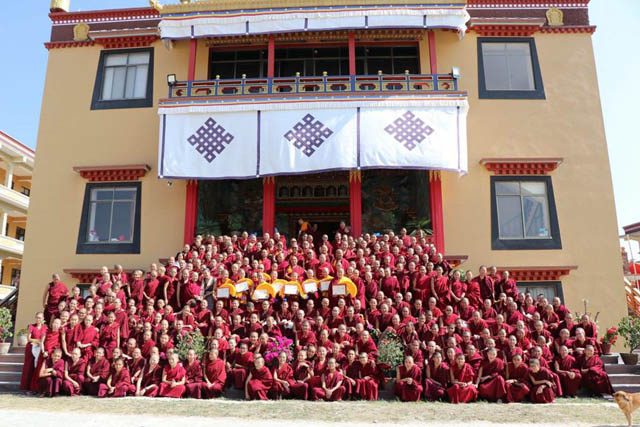
His Holiness the Dalai Lama has praised the nuns’ success and called on them to take leadership roles.
“The dharma is at a critical juncture,” he said. “You might think that it would be good to spend the rest of your life as a hermit, but we also need qualified people to teach others. Once you complete your studies we need some of you nuns to teach. Until now you have relied on monks to teach you, but in future it will be very important that there are also nuns to teach nuns.”
The educational opportunities opening up for these dedicated women scholars does not end with the granting of their geshema degrees. Last year the Tibetan Nuns Project, with the advice and support of His Holiness the Dalai Lama, launched a groundbreaking, two-year program in Buddhist tantric studies.
You can learn more about the geshema degree and the Tibetan Nuns Project here.
Heather Wardle is a Buddhist practitioner from Vancouver, B.C. She works part-time doing fundraising and communications for the Tibetan Nuns Project. She has been a Tibetan activist for 30 years and edited “The Power of Compassion” by His Holiness the Dalai Lama, and “Tibetan Voices: A Traditional Memoir,” by Brian Harris. In the early 1990s she worked in Dharamsala as senior reporter for the Tibetan Bulletin, an English-language news magazine published by the Central Tibetan Administration.
